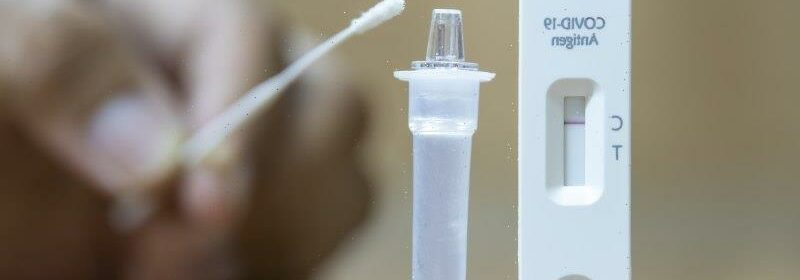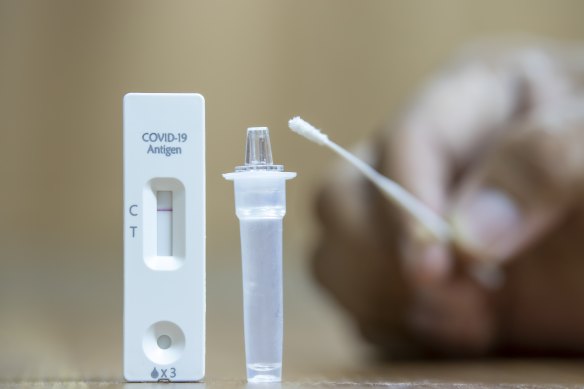People exposed to COVID-19 may need three at-home tests: FDA

Washington: The US Food and Drug Administration on Thursday issued a new recommendation that asymptomatic people who are using coronavirus antigen tests take at least three tests, each spaced 48 hours apart, to reduce the odds of missing an infection.
People who have COVID-19 symptoms should take at least two tests, 48 hours apart, according to the agency.
The new guidelines come as the highly transmissible BA.5 subvariant of Omicron continues to spread and after the Centres for Disease Control and Prevention eased its recommendation for routine surveillance testing in most circumstances.
An at-home COVID test.Credit:Getty Images
Many people have reported that at-home tests failed to detect their infections, but studies have generally shown that rapid antigen tests are as good at detecting Omicron as they were at detecting Delta, the previous variant of concern.
The new recommendations are “very grounded in science,” said Dr. Michael Mina, a former Harvard public health researcher who is now the chief science officer for eMed, which sells at-home tests. “Sometimes it takes the virus two days to grow to a detectable level, and sometimes it takes six days to grow.”
Experts have long noted that rapid antigen tests, which are less sensitive than PCR tests, are designed to be used serially and that they are most likely to detect the coronavirus when people take them repeatedly over the course of several days.
The new recommendations emphasise the need for “additional testing over a longer period of time,” the agency said.
“The FDA’s new recommendations for at-home COVID-19 antigen tests underscore the importance of repeat testing after a negative test result in order to increase the chances of detecting an infection,” Dr Jeff Shuren, director of the agency’s Centre for Devices and Radiological Health, said in a statement.
The new guidance is based on the results of a new national study, which has not yet been published in a scientific journal. The study, led by researchers at the University of Massachusetts Chan Medical School, focused on 154 people who tested positive for the virus using PCR tests between October and February.
It found that among symptomatic people, two tests taken 48 hours apart detected 93% of infections. But the same testing pattern detected just 63% of infections in asymptomatic people.
When people without symptoms took three tests, each two days apart, the tests caught 79% of infections.
“We provide data-based evidence on how to test when using rapid antigen tests,” said Dr Apurv Soni, an assistant professor at UMass Chan Medical School, who led the research. “The schedule of testing is important.”
Some people enrolled in the study had Delta infections, while others were infected with Omicron, the researchers said.
“The fact that the tests can detect Omicron is an important point that cannot be emphasised enough,” said Nathaniel Hafer, a molecular biologist at UMass Chan Medical School and an author of the study.
People who are worried that they may be infected even after receiving two or three negative results on at-home antigen tests can continue to test themselves, seek out a more sensitive PCR test or consult with a doctor, the FDA said.
Those who test positive using at-home tests, the agency said, should assume that they are infected and follow the guidelines set forth by the CDC.
The CDC updated its COVID-19 guidance Thursday but did not change its recommendation that people who test positive for the coronavirus isolate at home for at least five days.
People do not need to use the same brand of test each time, the FDA said.
“If you plan to use at-home COVID-19 antigen tests, have several tests on hand so you can test more than once,” the agency said.
This article originally appeared in The New York Times.
Get a note directly from our foreign correspondents on what’s making headlines around the world. Sign up for the weekly What in the World newsletter here.
Most Viewed in World
From our partners
Source: Read Full Article
